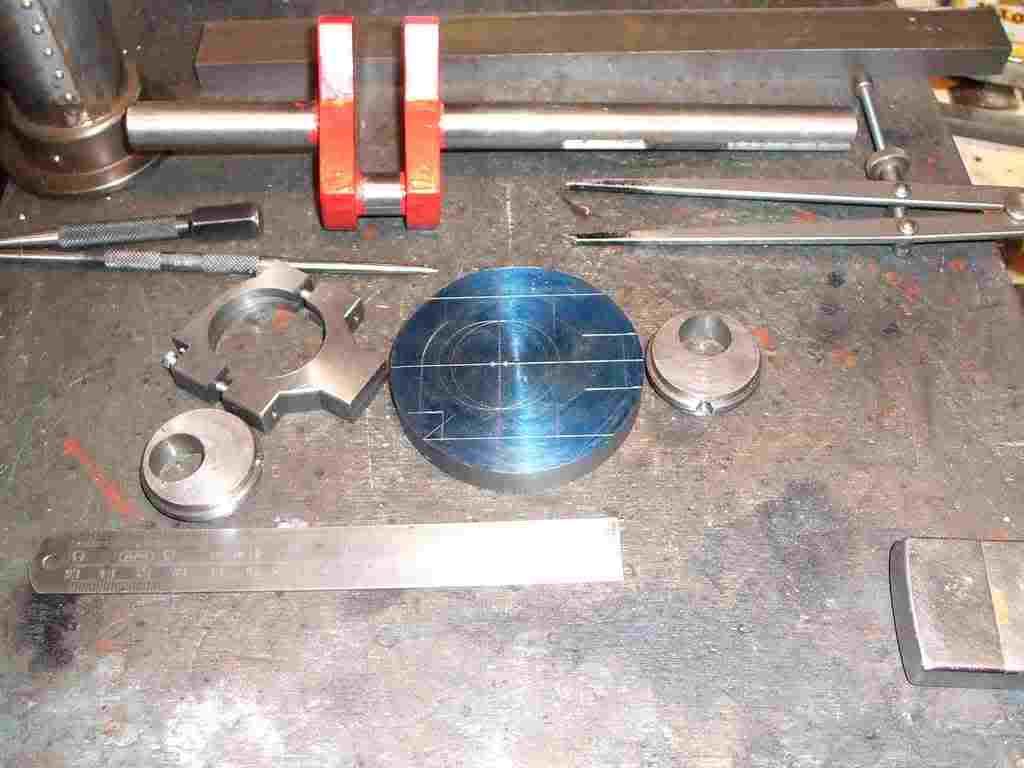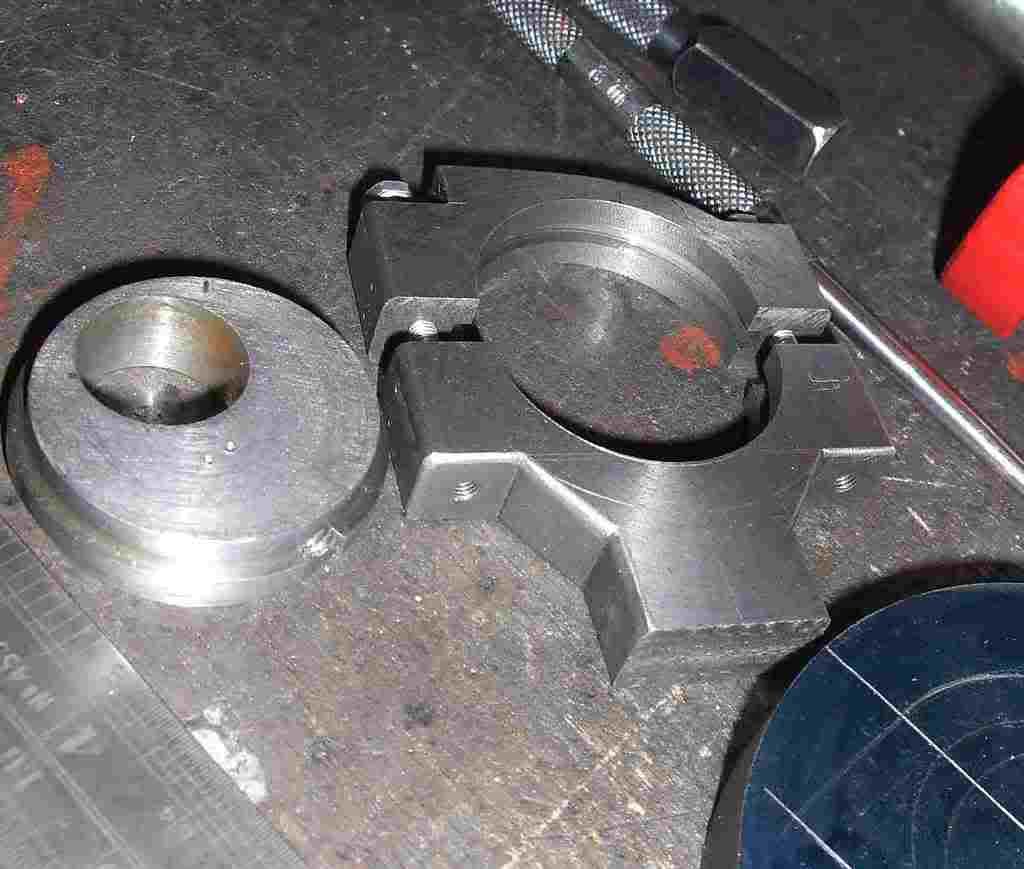B
Bogstandard
Guest
First off turn up your eccentric blanks in the lathe

Then mount your blank onto the miller, either into the RT or the vice (if you have a backstop on the vice, use it then you can repeat the op by just dropping it in), and centre it to the spindle.

Offset by the required amount using your X or Y indexing handles and lock the table up. Then just drill your holes. If you are doing more than one just drop the new one in and drill away.

Either make up a mandrel to fit or just a bolt in the lathe chuck and mount up the drilled eccentric and gently turn the boss to the required size (this pic shows it being done in a 4 jaw self centreing chuck not a 4 jaw independent).

Job done.

John

Then mount your blank onto the miller, either into the RT or the vice (if you have a backstop on the vice, use it then you can repeat the op by just dropping it in), and centre it to the spindle.

Offset by the required amount using your X or Y indexing handles and lock the table up. Then just drill your holes. If you are doing more than one just drop the new one in and drill away.

Either make up a mandrel to fit or just a bolt in the lathe chuck and mount up the drilled eccentric and gently turn the boss to the required size (this pic shows it being done in a 4 jaw self centreing chuck not a 4 jaw independent).

Job done.

John






